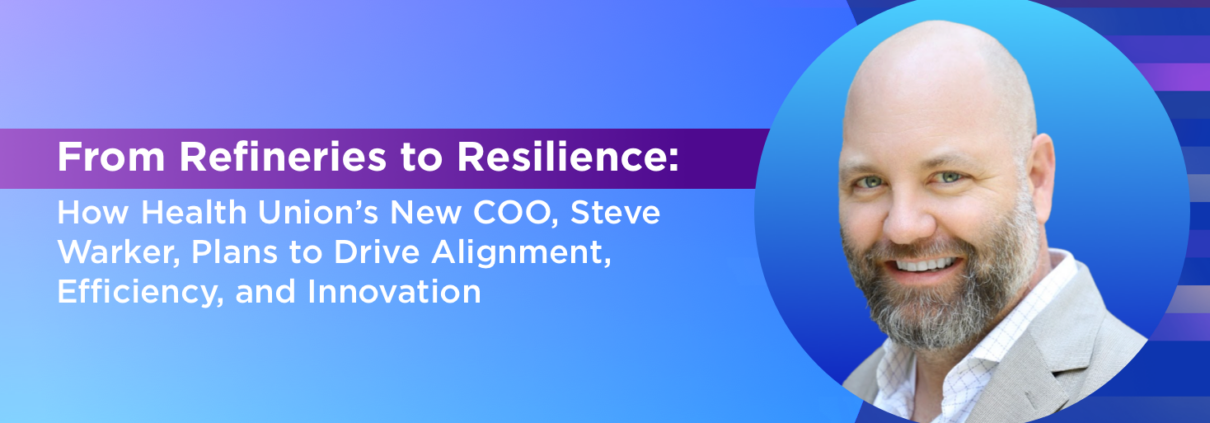Why You Need HCP Personas
Building healthcare personas enables brands to personalize content and communication methods (e.g. social media, email, SMS text, EHS, etc.), which leads to better engagement rates, lower marketing costs, and fewer website bounce rates. One recent study shows personalization can increase marketing ROI by up to 30%.[2] By developing buyer personas, brands can gain perspective on each type of buyer. Well-defined healthcare personas shed light on specific customers’ distinctive pain points, backgrounds, expectations, and incentives.3
Building personas also helps organizations understand the obstacles HCPs face based on customer-driven data. As a result, brands can learn how to personalize the best marketing tactics to reach target audiences and address shortcomings in HCP communication.[3]
For example, consider a scenario where the target HCP audience is PCPs and the marketing goal is to increase the roster for a professional development webinar series. Using data-driven research, the healthcare brand is able to determine this particular PCP persona has a focus on preventative care; values evidence-based practices and stays up-to-date on the latest medical research; is interested in technology to enhance patient engagement and education; and that time is crucial, so all content needs to be relevant and concise.
With this information, the healthcare brand can send personalized emails to target HCPs that highlight the relevance of the webinar series to their practice, as well as share concise information on social media about professional networks and forums. All content would highlight the webinar series’ emphasis on evidence-based practices, and feature renowned experts in the field that showcase the latest research findings relevant to primary care. Moreover, promotions for the webinar would acknowledge potential time constraints and emphasize that sessions delve into innovative tools and resources for patient engagement and education.
By tailoring the marketing campaign to align with the PCP persona, the content becomes more relevant and appealing to their specific needs and preferences, increasing the likelihood of engagement and participation.
How to Create HCP Personas: A Step-by-Step Guide
Every buyer has individual pain points and needs, so it’s important to speak directly to them to not only reach them, but also to engage and convert effectively. A uniform campaign approach will not speak to the personal interests and background of every HCP. Developing distinct HCP personas allows healthcare organizations to address the unique needs and preferences of specific types of healthcare professionals.
Here’s a step-by-step guide on how to create HCP personas to improve and personalize marketing tactics.
1. Conduct Research on the Ideal HCP Audience
Collecting data on target HCPs is key to understanding how to best speak to their pain points and preferences. This research phase will help answer how your brand’s services or products can benefit specific HCPs and their patient populations, and how to personalize communications with them effectively.
Pertinent information to gather can include:
- Demographics data (e.g., age, gender, and location)
- Personal interests and hobbies
- Associated groups and communities
- Various communication channels they use
- Online behavior (i.e., website visits, content downloads, and social media engagement)
- Company size and number of patients
- License type
- Practice type
- Prescribing behavior
- Purchasing behavior
Now, let’s dive into common resources to utilize when researching HCP audiences.
Publicly Available Sources
Use publicly available sources such as professional networking sites (e.g., LinkedIn), professional associations and registries, trends in healthcare, and industry publications to gather basic information about HCPs to segment them into smaller groups with similar traits.
Third Party Data
Tap into third-party data providers who have done extensive research on HCPs. Using third-party data enables healthcare marketers to craft a more comprehensive portrait of a specific audience segment. For instance, Health Union employs several data sources to layer on behaviors of certain HCPs (e.g., goes to the gym often, donates to charities, etc.). This aggregation of data from multiple sources allows healthcare brands to develop incredibly customized audience segments to then build detailed personas. In turn, brands can improve reach to their intended audience and filter out irrelevant segments.[4]
Professional Events & Conferences
Attend healthcare-related conferences, workshops, and events to gather data directly. Marketers can accumulate contact information, observe interactions between HCPs, and note the topics of interest discussed at these events.
Interviews & Surveys
Interview and/or survey your marketing advisory board to learn more about specific HCPs’ career motivations, day-to-day tasks, and challenges they come across. Sift through your contacts database to discover patterns or trends in the healthcare professionals who find and engage with your content. This can include both current customers and prospects. Reaching out to those contacts can be fruitful not only in gaining further knowledge of their backgrounds and experiences, but also in acquiring feedback on your brand’s specific services and products. Direct feedback can also provide excellent quotes to help shape future messaging in communications and marketing.
As always, data should be collected with explicit consent and in compliance with data protection regulations.
Website Forms
When creating landing page forms for your website, build form fields that capture important data from the target audience.[1] However, landing page forms should never include too many fields, as this can overwhelm users. Make some fields optional so users can fill out more information if they wish to provide further details.
2. Explore Communication Preferences
When conducting research, determine the target HCP audience’s favored communication channels, such as email, conferences, social media, or professional networks. It’s also critical to consider the frequency and type of content they prefer to market services successfully. Researching how an ideal audience prefers to engage can help brands inspect and optimize their communication tactics. Are the right channels being utilized? What is the current cadence for sending out communications for each channel? What type of content yields the highest engagement? What key brand messages must the target audience connect with (i.e., the specific prescription drug, therapy, or medical device offer)? Answering these questions can help shape your marketing strategy to suit the target audience’s needs better.
3. Segment HCP Audiences
Divide your target audience into HCP audience segments based on relevant criteria such as specialty, license type, practice type, experience level, location, and work setting. Segmenting HCP audiences will help your brand create more targeted and specific personas.
4. Build Out HCP Personas
Based on the collected data and market research, healthcare marketers can pinpoint patterns and similarities to develop detailed and distinct personas. Remember that personas are semi-fictional representations of your ideal customers, so consider giving each persona a name and a face to make them more relatable. That representation will serve as a typical member of that group.
Each segment should include details like demographics, challenges, goals, and communication preferences. It’s also vital to include a section on how your brand can best address their needs and preferences and how to help them overcome obstacles they face.
Here’s a more detailed breakdown of which elements to include:
- Demographics: Age, gender, location, education, and professional background.
- Professional Role: Job title, responsibilities, and scope of practice.
- Challenges: Identify the key challenges and pain points they face in their roles.
- Goals: Understand their professional and personal objectives.
- Information Sources: Determine where they seek information, whether it’s medical journals, conferences, or online platforms.
- Communication Preferences: Explore how they prefer to receive information, whether through emails, conferences, or social media.
5. Validate HCP Personas With Stakeholders
Share HCP personas with key stakeholders, including sales, marketing, and product development teams. Gather feedback and make adjustments to confirm the personas accurately represent the target HCP audience. Furthermore, regularly review and update the personas based on new data and changes in the healthcare industry.
6. Tailor Marketing Messages & Content
Craft messaging that resonates with the identified personas by addressing their specific needs. Stakeholders such as sales teams should understand how to discuss products or services with specific personas, including any specific phrasing to incorporate.[1] Showcase how your brand’s product or service can offer value to the target HCP and their patient population.
Elevate Campaigns With Insightful HCP Personas
Healthcare personas empower healthcare providers to navigate the complex landscape of patient care with greater precision and compassion. By recognizing the individuality of each patient, healthcare professionals can customize their services, validating that every person receives the individual care they deserve. Health Union’s experts can help your brand implement healthcare personas to understand target audience segments better and enhance patient-centric care. Speak to an Health Union representative today to learn more about tailoring healthcare marketing tactics.
____________________________________________________________________________________
Learn more about how Health Union is activating the largest and most unique HCP data in healthcare: health-union.com/human-side-of-data/#HCP
Sources
- Needle, F. (2023, December 5). How to create detailed buyer personas for your business [+Free persona template]. HubSpot. https://blog.hubspot.com/marketing/buyer-persona-research
- What is personalization? (2023, May 30). McKinsey & Company. https://www.mckinsey.com/featured-insights/mckinsey-explainers/what-is-personalization
- High-need, high-cost patient personas. (n.d.). The Commonwealth Fund. https://www.commonwealthfund.org/trending/high-need-high-cost-patient-personas
- The power of third-party healthcare provider data for programmatic advertising. (n.d.). Healthlink Dimensions. https://www.healthlinkdimensions.com/post/the-power-of-third-party-healthcare-provider-data-for-programmatic-advertising
- The ultimate guide to doctor marketing strategy. (2023, October 20). Medical Digitas.
https://medicaldigitals.com/doctor-marketing/




